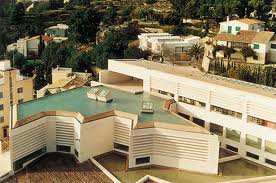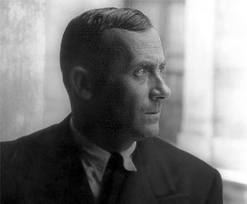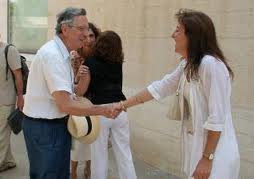Miró Foundation Mallorca

Where: Fundació Pilar i Joan Miró, Calle de Saridakis 29, 07015 Palma - Illes Balears
Opening hours: Winter (September 16 - May 5) Tuesday to Saturday from 10 am to 6 pm, Sunday and holidays from 10 am to 3 pm. Closed on Monday
Summer: (May 16 - September 15) Tuesday to Saturday from 10 am to 7 pm, Sunday and holidays from 10 am to 3 pm. Closed on Monday.
If you are planning to go to Spain, Mallorca could be a great option to visit or stay and we recommend not missing out on the amazing Pilar and Joan MiróFoundation museum!

In 1956, the Catalan artist, Joan Miró, and his wife, Pilar Juncosa, moved to Mallorca. Three years later the artist purchased an estate, known as Son Boter, which had an 18th century house that Miró used as atelier and as a support for the charcoal graffiti he made on its walls. These studios were, and still are, the most faithful and eloquent evidence of Miró's environment and creative activity during his mature phase.
The uncontrolled urban development near Son Boter and Son Abrines was a matter that preoccupied Miró, specially when it came to the future of his ateliers, spaces that gave evidence of the atmosphere that surrounded him and his artistic process. Miró himself said 'there must be a way to preserve these ateliers as they are when I'm not here anymore, when I'm gone'. With this objective in mind, the artist created a public and municipal foundation for the enjoyment of all citizens, to which he donated his ateliers with the collection of artworks, objects and documents it contained.
In 1981 the Pilar and Joan MiróFoundation began. In the previous years the Palma City Hall had approved the statutes of the foundation whose objectives were 'the promotion and dissemination of artistic knowledge to facilitate the creative labour of future artists in permanent collaboration with all aspects of society, surpassing the traditional preconceptions linked to museums through a cardinal and dynamic reality that experientially explains the aesthetics of contemporary arts'. The creation of the Foundation arose from Miró's wishes to promote and transmit his artistic creation as well as preserving his ateliers, which were his creative space from 1956 till his death in 1983.

The lack of exhibition space in which to display the collection motivated the construction of a new building which would lodge Miró's artistic legacy. His widow, Pilar, donated some lands and a number of Miró's artworks (39 water colours and 3 oil paintings) so they could be auctioned in Sotheby's in 1986 in benefit of the Pilar i Joan Miró Foundation. The funds raised in the auction allowed the construction of the new building. In 1987 Rafael Moneo – chairman of the Harvard Graduate School of Design at the time – was commissioned with the projection of the new building in the adjoining land.
In harmony with the express wishes of its founders, the dissemination of artistic knowledge and promotion of artistic creation have guided the Pilar i Joan Miró Foundation since the beginning. The Foundation is a museum that allows to discover Miró's work environment, to observe his creative process and to inquire into the historical, artistic and cultural context that surrounded him. It is a centre for contemporary artistic creation – its analysis, research, interpretation, exhibition and dissemination; a meeting point for the design and development of projects by artists, writers musicians, and for all of those who are interested in art and culture; in short, it is a meeting point for the exchange of ideas. The foundation has established several ties to the community where it's rooted, while its activities have projected it onto the international chart.
Check out a Spain travel guide to find out all about Spain, its culture and fun activities to do there!



